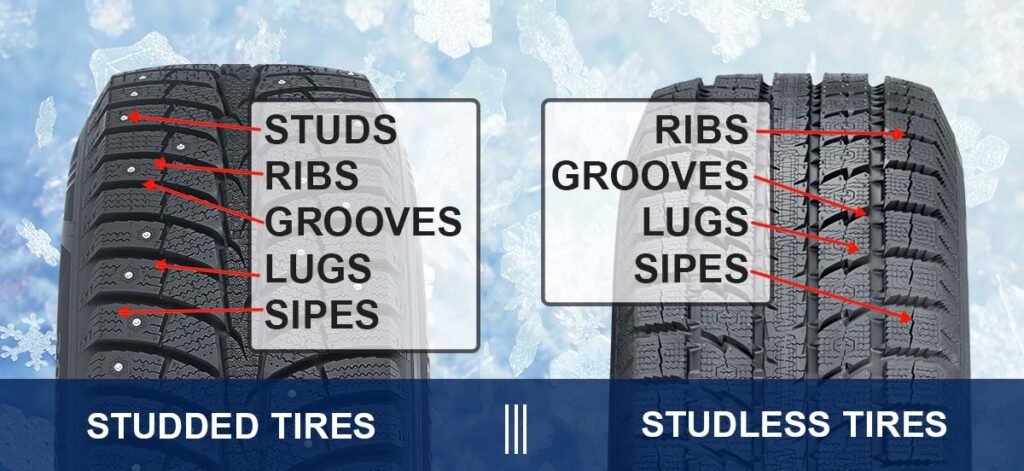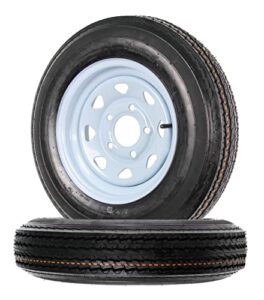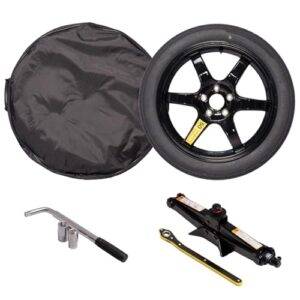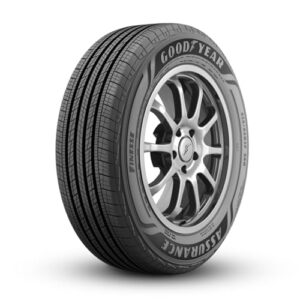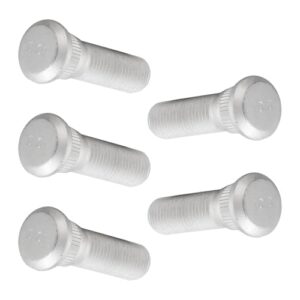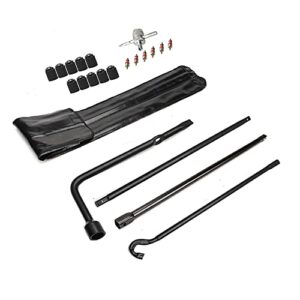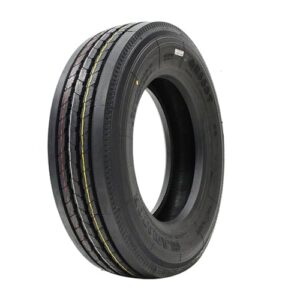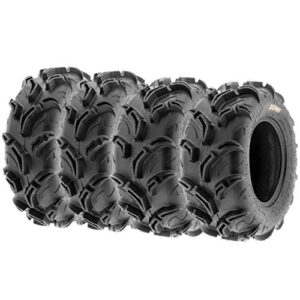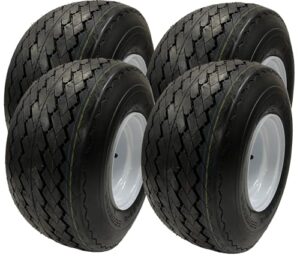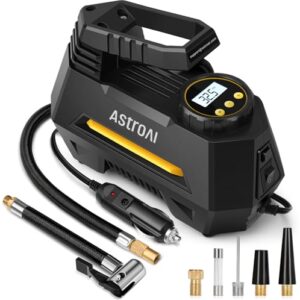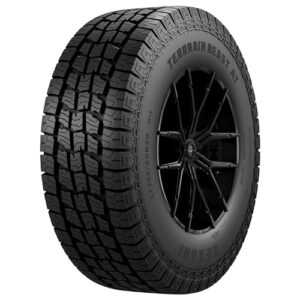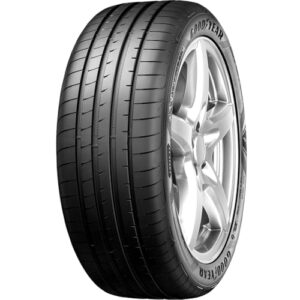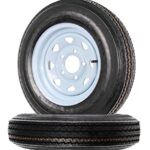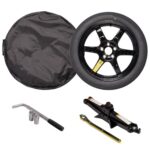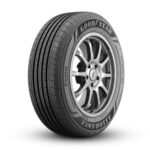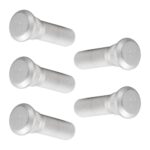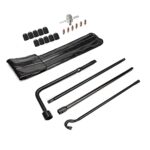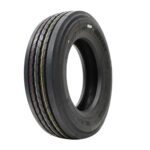Studded tires provide superior traction on icy and snowy roads. They improve vehicle control and reduce braking distances.
Winter driving can be treacherous, especially in regions with heavy snowfall and ice. Studded tires are specifically designed to tackle these harsh conditions. Metal studs embedded in the tire treads dig into ice, offering better grip and stability. This results in improved vehicle control and shorter braking distances, significantly improving safety.
With studded tires, drivers experience less skidding and better handling, making winter driving less stressful. These tires are particularly beneficial for those living in areas with severe winter weather. Investing in studded tires can be a game-changer, ensuring safer journeys throughout the cold season.
Introduction To Studded Tires
Winter driving can be dangerous. Roads become slippery and hazardous. Studded tires help. They provide extra grip on icy roads. Let’s explore the benefits.
What Are Studded Tires?
Studded tires have metal studs. These studs dig into ice and snow. They improve traction and safety. The studs are small but effective. They help your car stop quickly. They also help with better control when turning.
Historical Background
Studded tires have been around for decades. They were first used in the 1960s. People needed better traction on icy roads. Early models were simple. They had metal studs added to regular tires. Over time, they improved. Today’s studded tires are more advanced. They are safer and more effective.
| Year | Development |
|---|---|
| 1960s | First studded tires introduced |
| 1970s | Improved stud design |
| 1980s | Better materials used |
| 2000s | Advanced technology for safety |
Studded tires have evolved. They are now a crucial part of winter driving. They make icy roads safer. Many drivers trust them.
Improved Safety Features
Studded tires provide increased safety features for your vehicle. These features help ensure a safer driving experience in icy and snowy conditions. Below are the main benefits of studded tires, focusing on improved traction and reduced braking distance.
Improved Traction
One of the primary benefits of studded tires is improved traction. The metal studs embedded in the tire tread grip the ice. This reduces the likelihood of slipping. The studs dig into the snow and ice, providing a firmer grip on slippery surfaces. This helps you maintain better control of your vehicle.
| Condition | Regular Tires | Studded Tires |
|---|---|---|
| Ice | Poor traction | Excellent traction |
| Snow | Moderate traction | Good traction |
Reduced Braking Distance
Studded tires also help in reducing braking distance. This is crucial for avoiding accidents. The metal studs create additional friction on the road surface. This allows your vehicle to stop more quickly. In icy conditions, this can mean the difference between a close call and a collision.
- Shorter stopping distance on icy roads
- Increased safety for you and your passengers
- Less risk of skidding or losing control
Studded tires are highly effective in winter conditions. They provide crucial safety benefits that regular tires cannot match. With improved traction and reduced braking distance, you can drive with greater confidence and peace of mind.
Performance In Winter Conditions
Winter roads can be very dangerous. Having the right tires makes a big difference. Studded tires offer many benefits. They improve performance in harsh winter conditions.
Handling On Ice And Snow
Studded tires have metal studs embedded in them. These studs dig into ice and snow. This gives the car better grip. Better grip means better control. You can steer more safely on icy roads.
Regular tires can slip on ice. Studded tires reduce this risk. You get more traction. This helps in stopping quickly and starting smoothly.
Stability On Slippery Roads
Stability is crucial on slippery roads. Studded tires provide this stability. They reduce the chance of skidding. You feel more confident while driving.
Studded tires also help in sharp turns. The studs grip the road surface. This prevents your car from sliding. Safer turns mean safer travels.
| Feature | Benefit |
|---|---|
| Metal studs | Improved traction on ice |
| Better grip | Increased control |
| Stability | Reduced skidding |
| Traction | Safer stopping and starting |
Comparing Studded Vs. Non-studded Tires
Winter driving can be challenging. Choosing the right tires is crucial. There are two main types: studded and non-studded tires. Each type has its own benefits. Let’s compare them.
Performance Differences
Studded tires have metal studs embedded in the tread. These studs grip icy roads better. They provide excellent traction. Non-studded tires rely on special rubber compounds and tread designs. They offer good performance on snow and slush, but not as much on ice.
Let’s look at a comparison table:
| Feature | Studded Tires | Non-Studded Tires |
|---|---|---|
| Traction on Ice | Excellent | Good |
| Traction on Snow | Good | Excellent |
| Performance on Dry Roads | Poor | Good |
| Noise Level | High | Low |
Safety Comparisons
Safety is vital in winter driving. Studded tires excel on icy roads. They reduce stopping distances on ice. This can prevent accidents. Non-studded tires are safer on dry and wet roads. They do not damage road surfaces. This makes them a good choice for mixed conditions.
Here are some safety points to consider:
- Studded tires are best for areas with frequent ice.
- They offer better control on steep, icy hills.
- Non-studded tires are safer for urban driving.
- They perform well in mixed road conditions.
Choosing between studded and non-studded tires depends on your needs. Both have unique advantages. Assess your driving conditions to make the best choice.
Technological Advancements
Studded tires have come a long way due to technological advancements. These improvements have improved their performance and safety. Let’s explore some key areas where technology has made a difference.
Modern Studded Tire Designs
Modern studded tires are designed with advanced materials. These materials increase durability and performance. The latest designs feature lightweight studs that reduce wear and tear. This means the tires last longer and perform better.
Innovative tread patterns are also a key part of modern designs. These patterns increase grip on icy and snowy roads. They ensure that you stay safe even in extreme conditions. Some models even have studs that retract when not needed. This makes them versatile for various driving conditions.
Environmental Considerations
Environmental impact is a major concern for studded tires. New technologies aim to reduce this impact. Modern studded tires use eco-friendly materials. These materials are designed to be less harmful to the environment.
Another significant advancement is the reduction of road wear. Traditional studded tires can damage roads, causing environmental issues. New designs minimize this damage, making them more sustainable. Some manufacturers even focus on recyclable materials, adding to their eco-friendliness.
Below is a table summarizing the key technological advancements:
| Advancement | Benefit |
|---|---|
| Lightweight Studs | Reduce wear and tear |
| Innovative Tread Patterns | Increased grip on icy roads |
| Retractable Studs | Versatility in various conditions |
| Eco-friendly Materials | Less environmental harm |
| Reduced Road Wear | More sustainable |

Legal And Regulatory Aspects
Understanding the legal and regulatory aspects of studded tires is crucial. Different regions have distinct rules. These regulations ensure safety and road maintenance. Knowing them helps avoid fines and legal issues.
Regional Regulations
Each region has its own set of regulations for studded tires. These rules vary widely. Some states in the U.S. allow them while others do not. For instance:
| State | Studded Tire Usage |
|---|---|
| Alaska | Allowed from September 15 to April 30 |
| California | Prohibited |
| Colorado | Allowed with restrictions |
Check local laws to ensure compliance. Always stay updated with the latest regulations.
Seasonal Restrictions
Many regions impose seasonal restrictions on studded tires. These rules help protect road surfaces during warmer months. For example:
- In Oregon, studded tires are allowed from November 1 to March 31.
- In Washington, the permitted period is from November 1 to March 31.
- In Maine, they are allowed from October 1 to May 1.
These restrictions are enforced to minimize road damage. Always follow the seasonal timelines to avoid penalties.
Maintenance And Care
Studded tires are a great choice for icy roads. Proper maintenance and care ensure they last long. Follow these tips to keep your studded tires in top shape.
Proper Usage Tips
- Check tire pressure: Always keep your tires at the recommended pressure.
- Rotate tires regularly: Rotate your tires every 5,000 miles.
- Inspect for wear and tear: Look for any signs of damage or uneven wear.
- Avoid speeding: High speeds can wear out the studs quickly.
Longevity And Durability
Maintaining your studded tires increases their lifespan. Here are some ways to ensure your tires last longer:
- Store properly: Keep tires in a cool, dry place during off-season.
- Clean regularly: Remove dirt and debris from the studs and treads.
- Balanced alignment: Ensure your wheels are properly aligned.
| Maintenance Task | Frequency |
|---|---|
| Check Tire Pressure | Monthly |
| Rotate Tires | Every 5,000 miles |
| Inspect for Damage | Every Season |
| Clean Tires | Monthly |

Frequently Asked Questions
What Are The Disadvantages Of Studded Tires?
Studded tires can damage roads, generate more road noise, and have lower fuel efficiency. They also offer poor performance on dry or wet pavement.
How Fast Should You Drive With Studded Tires?
Drive with studded tires at a maximum speed of 50 mph (80 km/h) for safety. Always follow local speed limits.
Do Studded Tires Wear Out Faster?
Yes, studded tires wear out faster on dry or wet roads. They are designed for icy conditions, causing quicker wear otherwise. Regular monitoring and maintenance can extend their lifespan.
In What States Are Studded Tires Illegal?
Studded tires are illegal in Hawaii, Illinois, Minnesota, Wisconsin, and parts of Michigan. Check local regulations for specifics.
Conclusion
Studded tires offer improved traction on icy roads. They provide increased safety during winter driving. Their durability ensures long-lasting performance. Although they can be noisy, the benefits outweigh the drawbacks. Consider studded tires for a reliable winter driving experience. Enjoy peace of mind with better control in harsh conditions.


